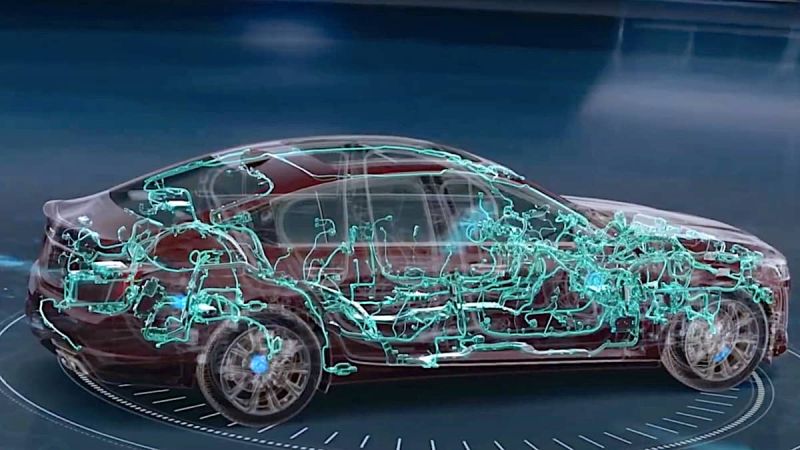Electric Vehicles and Maintenance
Compared to ICE (Internal combustion engine) vehicles, EVs (electric vehicles) have significantly fewer moving parts and therefore can be expected to have fewer maintenance and repair issues. In fact, one survey estimates that EV owners will wind paying a little over $4,000 less than ICE vehicle owners during the lifetime of their vehicle. However, many people mistakenly believe that EVs are essentially maintenance-free and that there is very little to do to keep one operating perfectly. Wrong!
In fact, with power steering motors, AC pumps, and high voltage relay pumps---to name a few important systems within an EV---there is room for some DIY maintenance and repair EV owners can and should do with their cars.
Maintenance Issues Solely with EVs and Those Shared with ICE Vehicles
Here is a summary of maintenance issues according to the Scotty Kilmer YouTube channel that EV owners need to be aware of toward taking care of their car.
1. Try to maintain the battery level between 20% and 80%---repeated recharging to full and leaving a battery relatively discharged too low, for too long will typically decrease today’s EV batteries.
2. Know the difference between day-to-day driving vs longer road trips---with a long road trip, it is actually preferable to fully charge the battery ahead of time and run it until it is nearly depleted. For shorter trips such as the round trips between home and work, then charging up to 80% is recommended for maintaining good battery life.
3. Batteries do not like extreme heat and cold---heat can cause a battery to degrade prematurely; whereas cold can significantly reduce the range of a battery. For both conditions, when possible, make sure the vehicle is protected from the elements when temperatures are at their extremes.
4. Regenerative braking in EVs results in less brake pad wear, but still needs maintaining---brake pads, discs and brake fluid issues in ICE vehicles carries over to EVs as well. The solid components need to be checked periodically for wear, while the fluid has to be changed over time to prevent absorbed and trapped moisture in the brake fluid from corroding the brake system.
5. Coolant replacement---is needed in EVs just as it does for ICE vehicles. The only difference is that the coolant is used to keep the large EV battery system relatively cooled to prevent battery breakdown and damage. Consult your vehicle’s owners’ manual to find out how often to change your vehicle’s coolant.
6. Tire maintenance---tread wear, balancing, alignment and air pressure are just as critical to monitor and maintain in EVs as they are in ICE vehicles. In fact, the weight of EVs as well as the increased torque and power upon acceleration may cause more rapid wear of your tires than you are used to with your old gas vehicle. It is recommended to use tires designed specifically for EVs.
7. Electric Vehicle gear boxes---the gear boxes in EVs possess moving parts, so it can and will eventually wear out. And while oil changes are more about ICE vehicles, some EV gear boxes rely on oil and will require attention and may need to be changed at some time in their lifespan---just like sealed automatic transmissions in ICE vehicles do.
8. Electric motors---typically have an estimated lifespan of 15-20 years, but only if operated under normal conditions the vehicles were designed for. However, wear does occur and can be exacerbated by moisture, dirt, dust, and driving conditions. Furthermore, over-wear in one system could easily cause damage in another separate system. For example, consider what could happen should a cooling fan become blocked or malfunctioning---battery life and the AC induction motors powering the wheels could be seriously affected by the increased heat. Or, a weakened battery could cause the motors to overdraw on current to keep up with the demand for acceleration, and thereby result in a burned out electric motor or two.
For more details about Scotty Kilmer’s advice on owning an EV and what you can expect maintenance-wise, here is his informative YouTube video about the subject.
No One is Telling You the Truth About Electric Cars, So I Have To
And finally…
For more about EV-related articles, be sure to check out the following links about how one EV is outperforming Tesla; the latest Cybertruck review; converting an ICE vehicle into an EV using old Tesla battery packs; and, Protecting Your Tesla From Lightning.
COMING UP NEXT: Whether you are an ICE or EV owner, here's what you need to know about 12-volt car battery maintenance.
Timothy Boyer is Torque News automotive reporter based in Cincinnati. Experienced with early car restorations, he regularly restores older vehicles with engine modifications for improved performance. Follow Tim on Twitter at @TimBoyerWrites for daily automotive-related news.












